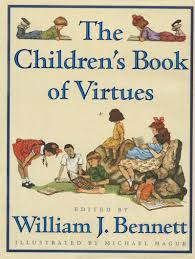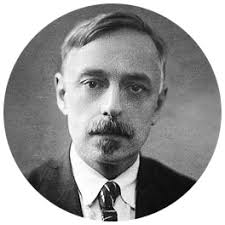Folktales are made up stories or fairy tales. They typically have a learning message within the story to hopefully impart some wisdom on the listener. Folk tales are popular because oftentimes  they’re stories that have been passed down from generation to generation and they instill some sort of nostalgia. For instance, when I was 1 years old my grandparents gifted me The Children’s
they’re stories that have been passed down from generation to generation and they instill some sort of nostalgia. For instance, when I was 1 years old my grandparents gifted me The Children’s
Book of Virtues and I still have it to this day. It’s filled with lots of sweet stories and poems all centered around virtuous things that children can understand and be interested in.

A shining example of a classic folk tale is the story of our first president George Washington cutting down the cherry tree. If you aren’t familiar with the story I’ll give a basic overview. The story of George Washington and the cherry tree is one full of lessons on the importance of honesty and that telling the truth is always the best option. In the story George is only six years old when he’s given a hatchet as a gift. He then took the hatchet and damaged the cherry tree that his father loved. His father demanded to know what had happened and George offered up the truth with no hesitation. He said “I cannot tell a lie… I did cut it with my hatchet” and instead of being punished his dad was just overjoyed with the bravery of telling the truth and accepting whatever the consequences may be. While this story seems like a children’s cautionary tale at face value it was actually created by one of Washington’s biographers. When Washington died people wanted to know more about him and this biographer, Mason Locke Weems, decided to embellish his life a little bit by coming up with this very sweet and virtuous story. 
Vladimir Propp was a Soviet folklorist in the 1900s. He would analyze folk tales by breaking the stories down into what he called “Morphemes” and then would elaborate on 31 different narrative units that he referred to as “Narratemes”. He believed that there are 5 distinguishable categories that can define the creation of the story. Those 5 categories are:
| 1. Functions of dramatis personae 2. Conjuctive elements 3. Motivations 4. Forms of appearance of dramatis personae 5. Attributive elements or accessories |
The 31 Narratemes can be categorized into 4 smaller categories. The first is the introduction. This is when the main characters are introduced along with the scene for the story. The second category is the body of the story where the story begins. The third section is the Donor Sequence where the main character of the story faces challenges and finds solutions to the problem at hand. The fourth aspect is the Hero’s Return which is the end of the story typically.
The concept of analyzing folklore does exist in other media. Just about every art form has different ways to analyze it.
This concept matters because it provides a set structure for understanding stories. Not every story will fit neatly into Propp’s analysis model but the vast majority of them can be analyzed with it. This method can be used with movies as well because they are stories.
If Vladimir Propp’s method of analyzing stories didn’t exist there would still be others finding commonalities among stories and analyzing them.
http://changingminds.org/disciplines/storytelling/plots/propp/propp.htm (Links to an external site.)
http://www2.nkfust.edu.tw/~emchen/CLit/folk_lit_type_folktale.htm (Links to an external site.)
https://files.osf.io/v1/resources/h6mt2/providers/osfstorage/59ab67cf6c613b02536a00e9?action=download&version=1&direct
https://www.mountvernon.org/library/digitalhistory/digital-encyclopedia/article/cherry-tree-myth/
